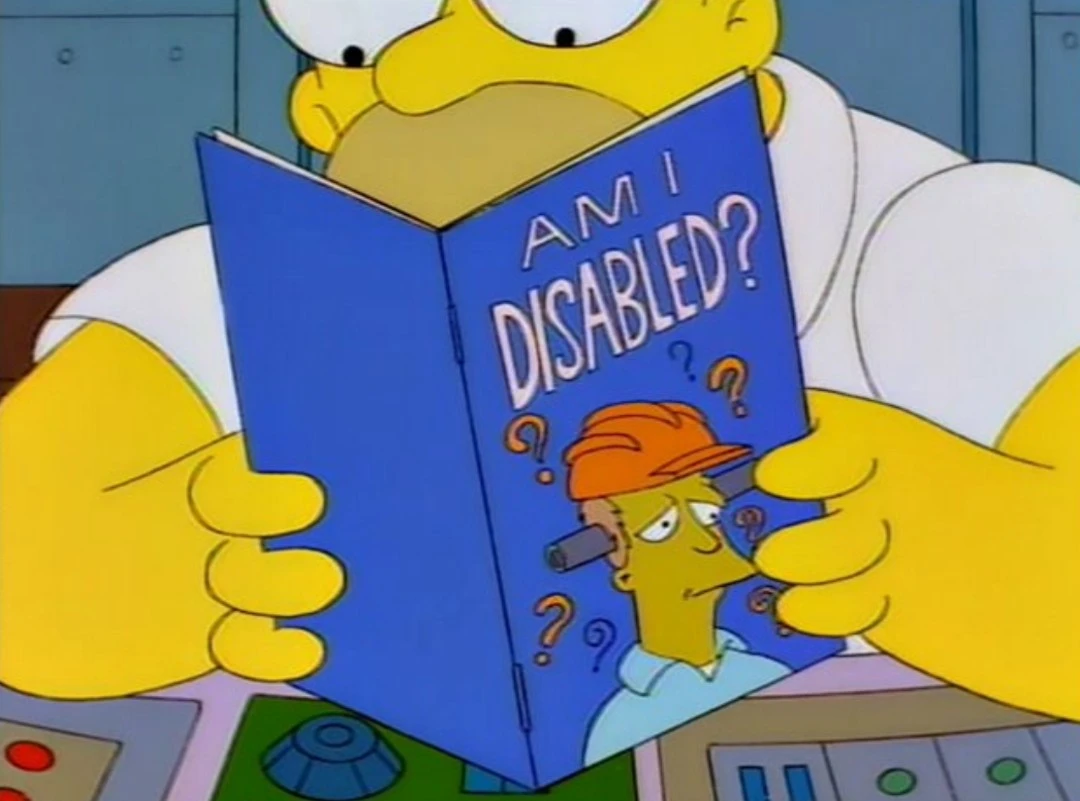whatever it is, it will be behind a paywall.
That you can only bypass with a neural link chip
Climate change is already happening. We’ll have some gadgets to help cope with that.
Personal coolers already exist. They’ll get more practical and more common.
Maybe there’ll be commercially available filtered air systems that keep houses at positive pressure to deal with wildfire smoke.
Everything will be over insulated. We’ll all where “parkas” with integrated water cooling for our 6 month summers when we go outside
So like the Stillsuits in Dune?
Yes
I wish summer was only 6 months long here. Still ‘winter’ and we are pegged to get to 36 in a couple days, 34 for tomorrow… Wooooo
They already have that in Japan
There will also be more extreme weather. Super cold winters, super hot summers, super dry times, super heavy rain etc. Storm bunkers could become popular.
Elder Scrolls V Ultra Special HD Epic Version
Switch 2 launch title
in VR
X11. It will outlive humankind.
This is the only realistic answer in this thread.
Something that has Ai that shouldn’t have Ai
I think you misread the question. It’s “10 years from now” not “10 days from now”. /Jk
How about a smart toaster? It knows what kind of bread you feed it, toasts it just right and understands your feedback. This way, it will update a neural network that covers all types of bread it has ever seen and how you like them toasted.
Red dwarf did it first
See also the Sirius Cybernetics Corporation Nutri-Matic Drinks Dispenser, designed to work out precisely what drink someone wants through careful analysis of their taste bud patterns and neurological signals before invariably producing a liquid which is almost, but not quite, entirely unlike tea.
The word “feed” is very unsettling in the context of an AI toaster…
And once the toast is ready, the machine pukes it out for you to enjoy. It’s sort of like the way birds feeding their young. The toaster should also make a relevant sound when that happens to max out everyone’s unsettle-o-meter. If you like, you can even record your own authentic sound on the next Saturday morning.
Pan fried toast is better, you can even toast them with butter
Either that or the trend is over and we have a new, similarity ridiculous trend
Dirt cheap genetic sequencing and MRNA vaccines will be available to cure various types of cancer.
I wish. Genetic sequencing is already pretty cheap, but cancer is not some all-encompassing disease to be cured by it.
There will be custom printed MRNA vaccines that target cancers based on sequencing that cancer’s own DNA.
Does this mean we would get vaccinated against all forms of cancer? Because these are a lot. What about people who already have a cancer?
Many kinds yes, idk enough to say all. Docs take a sample of the cancer DNA, turn that into an mRNA vaccine, inject it into you, and your immune system precisely destroys the cancer.
It seems interesting for many cancers, and lifesaving for already metastasized cancers.
Only downside will be lifelong wage garnishment to The Company.
It’s not necessarily a vaccine that you get in advance. It’s simply a vaccine in that it causes your body to create antibodies against the wonky cells, they can happen after chemo or radiation and still be effective.
I think we’re past due for a major technological breakthrough in energy storage that 1) increases energy density, 2) decreases max charge/discharge time, and 3) is more sustainable than, say Lithium.
With how much R&D seems to be pouring into this right now, I have at least hope.
I remember hearing about the development of solid-state batteries a few years ago and I have been anxiously awaiting any news regarding the concept since.
There are battery banks using solid state that are shipping today!
lol damn
Yeah, that was a bit of a disappointment. When I saw the first video from Undecided, I was really hyped that solid state batteries are actually here at last. I guess we’ll just have to wait a bit longer to see if it’s actually true.
It took about 10 years for the internet to go from academic curiosity to mainstream.
It took about 10 years from the first BlackBerry devices to iPhone/Android ubiquity.
I think VR and AI are at these points right now.
I think the big turning point for that could be the ability to run some advanced models (by today’s standards) on device. Would definitely unlock some pretty cool use cases.
I know we’re supposed to hate Apple here, but this is a big reason I’m excited about the upcoming event. I really like their path of on-device AI. I’ve been reading some of their case studies on making models work in limited memory situations and they’re already using their own soc with multiple specialized processing nodes that you can imagine being extended to support on device ai. Now let’s find out what they can deliver
Yes, Google has also moved in this direction with tensor and Gemini nano. I expect to see a lot more movement here over the next few years as there is a big financial incentive to offload all that compute cost as well.
WinRAR Free Edition
7-Zip
Mass produced sodium ion batteries, even cheaper solar panels, scalable water desalination, military adoption of quantum entanglement communication, high speed rail in California, MacBooks with a touchscreen
More horrific algorithmically-controlled jobs.
Hopefully we’ll see AR become more common place and easily integrated with glasses. Imagine being at a gathering and you can look at someone and get their name, maybe their LinkedIn or other profile. Directions overlaid right in front of you for navigation. Going to a sports game and seeing player stats above the player. Things like that.
Sounds like a privacy nightmare honestly. Also a kind of black mirror like social point system.
Navigation is the only one that sounds neat, but also a bit brain rotting. I already don’t know where I am half the time because of navigation.
I’d like more basic things, like a floating music player, sticky notes/todo list, notifications bar or video/text, when looking at a restaurant seeing the reviews and menu with order options, looking at a product and getting more info. Just stuff that I’d need to manually look up otherwise or things that would be infinitely better without being hunched over a handheld device.
I really want historic photos overlaid on top of existing buildings. I’d love to walk down Chicago and see in real time what it looked like 100 years ago.
How about Ikea instructions? You look at a pile of screws and a red circle appears around the one you need next.
Hate the idea of the former in a private setting, would like in a business setting. Absolutely adore the idea of directions (drove a car with a “heads up” display but it only integrated with the dreadful in-car navigation system and yet it was still awesome)… But player stats dangling over people’s heads? That maybe my kid without AR glasses wouldn’t be able to see and I could be the cool parent again? Awesome.
Actual autonomous vehicles. It certainly won’t be Tesla, and it won’t have a steering wheel.
I think road signs will have embedded codes for self driving cars. Whether it’s a local broadcast signal, a QR code, or just extra blocky letters for the computer to read easier, road signage and signals will be directed to the computer in the car, not to inform the human in the car.
Maybe much farther out in the future when autonomous vehicles are the default. That’s a lot of signage to rejigger for very little gain, while mapping and CV already handle that small part of driving quite well.
Hmm. Maybe the kind of signage I’m thinking of would only be useful for construction zones and emergency vehicles.
I imagine the FSD friendly signage will eventually get slow-rolled. That is, maybe you’ll see proactive replacement on major roads and highways, but local roads won’t be updated until the sign needs to be be replaced anyway.
One of the most amazing things about this would be to remove signs altogether. Just embed the sensor in the pavement and give the space the signs took up back to people, nature, or literally anything else.
Huge overhead highway gantries and traffic lights would be wonderful to remove, too. City sidewalks are narrow enough as is and they would be way better without 20+ft tall metal poles jutting out of the ground. Hopefully we can put trees in their place, but maybe I’m dreaming.
Oh wow, that does sound amazing.
Ooo like higher powered rfid tags! The info could even then be relayed to the driver via the on screen display since theyre now all required.
It could be relayed inside. But in a self driving car, the driver’s seat is just a second front passenger seat
I’ve thought about this idea for a long time.
Having sensors in the road (along the side and middle line) and receivers on cars would do a lot of good.
The sensors could tell the car how close it is to the side/middle. They could tell the car how close other cars are around them. They could tell the car the condition of the road surface (ex wet or icy). They could be programmed to the speed limit of the road and keep the cars moving at that speed. Probably many others uses.
The downside is building a sensor that can withstand weather, traffic, crumbling infrastructure. Also they would have to have a way to stay powered up for years. And if you made them re-programmable there is another level of security that needs to be added to them. And then there is the cost to retro-fit all the roads with these sensors and building a common receiver that could be installed on new cars.
I don’t think my idea is practical at all but it’s a cool idea
Surely there is a viable, inexpensive, simple solution. I think it would have to be a permanently programmed chip type of thing that is cheap enough that if you want to change the speed limit or lane specifications, it would be cost effective to replace all the chips along that length of road.
Maybe, but cars are already pretty good about reading signs.
It’s the lack of signs that’s the problem. Self-driving cars are pretty good on a well marked and signed road: if that’s all it took, we’re there. It’s the ubiquity of exceptions and edge cases that’s the problem.
My car recently did a one month trial of self-driving and it was a lot of fun. Also eye-opening. It did work really well on well-marked roads. However it also made me notice just how poorly marked most are. For example, it was great about staying centered between lane lines. However most local roads don’t paint the edge lines, or even the center line is worn off on many roads. Then the car is confused. I can’t even imagine what the car would do if everything were covered with snow, which does happen a lot around here
Yea. This is my big thing. Probably good on well traveled and maintained highways. Mostly good on city streets. It’s gonna be dog shit on a rural road.
I’m also curious how they would handle snow or other inclement weather that obstructs lane lines completely.
I think optics can make a big difference. Seeing the cameras in cars become much better so that they can read easier. But all road signage is already codified in a way that it should be relatively easy to do OCR or even matching on.
Actually efficient hardware and better batteries. I’m really interested in owning a laptop or mobile some day that can comfortably work for 20+ hours without being charged.
Batterie technology is fascinating and I expect big strides in the next 10 years (along with consumer generation of electricity)- to the point where people will be able to basically take their home “off grid” relatively easily.
I forget where I read this, but someone posited that the goal has always been “all day” battery. Ever since the first smartphones ,we’ve had, largely, the same battery life. It lasts most of the day and that’s good enough for most people. The secret, though, is that actually the batteries have gotten way bigger and more energy dense, it’s just that the processors and mobile radios are also more power intensive.
I suspect if you put a modern battery in a 5 yr old smartphone it would last 2+ days. But you’d have to deal with 3G radios, bad GPS, and slow performance.
I’m sure if I put a high density battery in my old eee PC, it could probably run for days.
I really hate that we’ve gotten such energy intensive applications. And honestly, I don’t think for a lot of them they have gotten much faster. They are bloated and programmers have been allowed to do that since every machine has so much extra resources now.
Depending on what you’re doing 20+ hours is already doable pretty easily on an M1 MacBook. I’m a pretty intensive internet user and I still get 10-15 hours.
Sexbots
It’s my sexbox and her name is Sony.
May Sony give you the fulfillment you’re searching for, friend.




















